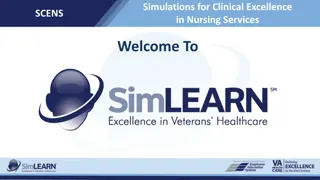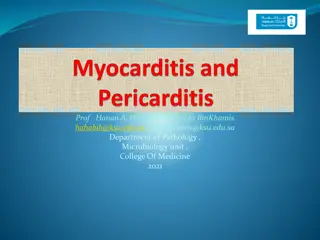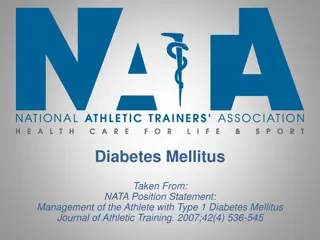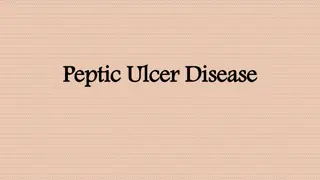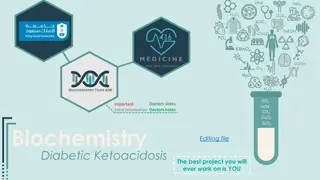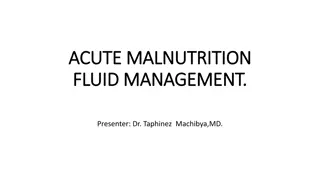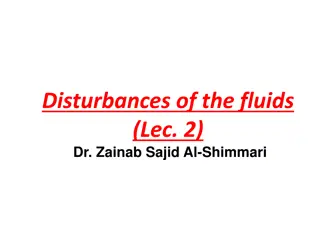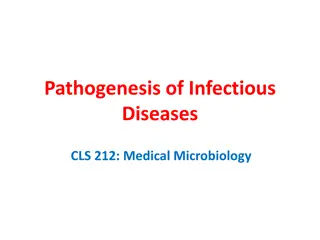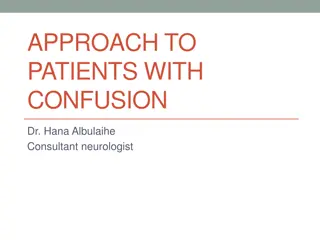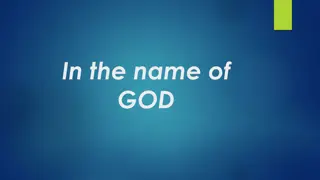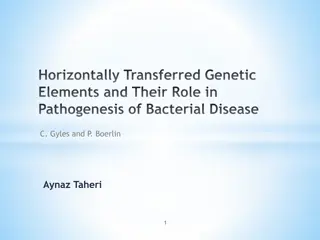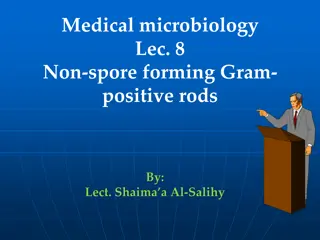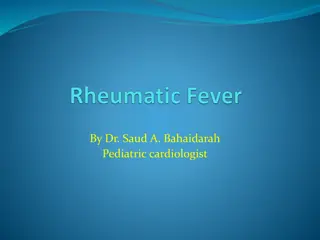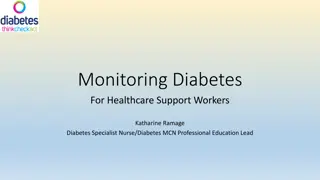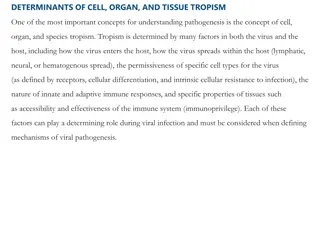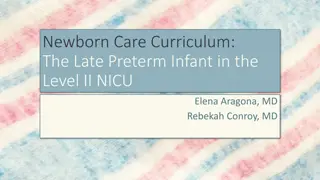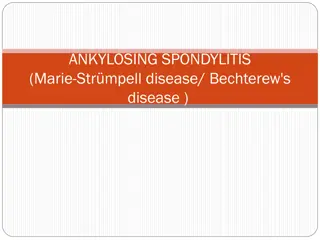
Hypoglycemia Symptoms and Defense Mechanisms
Learn about the common symptoms of hypoglycemia, how it is relatively uncommon, and the mechanisms our body uses to defend against low blood sugar levels. From insulin secretion to glucagon production, explore the crucial aspects that maintain glucose balance and prevent hypoglycemia.
Download Presentation

Please find below an Image/Link to download the presentation.
The content on the website is provided AS IS for your information and personal use only. It may not be sold, licensed, or shared on other websites without obtaining consent from the author. If you encounter any issues during the download, it is possible that the publisher has removed the file from their server.
You are allowed to download the files provided on this website for personal or commercial use, subject to the condition that they are used lawfully. All files are the property of their respective owners.
The content on the website is provided AS IS for your information and personal use only. It may not be sold, licensed, or shared on other websites without obtaining consent from the author.
E N D
Presentation Transcript
Introduction: Symptoms of hypoglycemia are common and non-specific.
In contrast, hypoglycemia is relatively uncommon and usually occurs in the setting of the treatment of glucose- lowering agents such as sulfonylureas or insulin.
symptoms, signs or both consistent with hypoglycemia; a low plasma glucose concentration at the time of suspected hypoglycemia; resolution of symptoms or signs when hypoglycemia is corrected.
Only after Whipples triad is fulfilled should work up for hypoglycemia be initiated.
Mechanisms of defense against hypoglycemia: Glucose is an important substrate for the metabolic processes generating energy for homeostasis.
It is the main fuel utilized by the brain and as such multiple mechanisms maintain glucose concentrations or alternatively facilitate processes such as lipolysis that generate alternative fuels that can be utilized for cerebral metabolism.
The first defense against hypoglycemia is the cessation of insulin secretion from the pancreatic B cells as plasma glucose concentrations decline .
Decreased insulin secretion appears to occur at a plasma glucose concentration of approximately 81 mg/dL.
The next most important mechanism to prevent hypoglycemia is the increase in glucagon secretion .
When glucagon production is inadequate, hypoglycemia persists without improvement.
Epinephrine is also an important factor in preventing hypoglycemia, but does not appear to be essential in the presence of glucagon.
Only when glucagon is deficient or the response is inadequate does the role of epinephrine becomes significant.
The levels of glucagon and epinephrine increase when glucose concentration falls below the physiologic range 68 mg/dL.
In cases of protracted hypoglycemia, cortisol and growth hormones are important counter-regulatory mechanisms;
however, in acute hypoglycemia, they do not appear to be significant contributors to the counter- regulatory responses .
Diagnosis of hypoglycemia : The symptoms of hypoglycemia can be divided into autonomic and neuroglycopenic.
Autonomic symptoms occur at plasma glucose concentrations of approximately 60 mg/dL neuroglycopenic symptoms occur at plasma glucose concentrations of approximately 50 mg/dL or less.
Autonomic symptoms can further be divided into: adrenergic symptoms that include palpitations, tachycardia, anxiety, tremors. cholinergic symptoms that include sweating, warmth, nausea and hunger.
Neuroglycopenic symptoms: weakness, behavioral changes, visual changes, confusion, dysarthria, dizziness/ lightheadedness, amnesia, lethargy, seizure, loss of consciousness and coma.
Brain death has been known to occur in instances when hypoglycemia is protracted.
The presence of autonomic as well as neuroglycopenic symptoms is highly suggestive of hypoglycemia. However, one must note that these symptoms are non- specific.
it is important to confirm hypoglycemia by establishing the presence of Whipple s triad before embarking on an evaluation to prevent unwarranted and expensive testing in patients who do not have true clinical hypoglycemia.
Whipples triad consists of: symptoms, signs or both consistent with hypoglycemia; a low plasma glucose concentration at the time of suspected hypoglycemia; resolution of symptoms or signs when hypoglycemia is corrected.
It is important that plasma glucose concentrations used to establish and document Whipple s triad be measured from a venous blood draw and measured in a reliable laboratory.
The relationship of hypoglycemia to meals is not important in determining etiology.
This is because patients with insulinoma may have postabsorptive symptoms, postprandial symptoms or a combination of both.
Patients with spontaneous plasma glucose concentrations less than 55 mg/dL on venous blood warrant for further work up.
Evaluation of hypoglycemia should be carried out at the time of spontaneous occurrence of symptoms .
Plasma is obtained for glucose, insulin, C-peptide, pro-insulin, beta-hydroxybutyrate and circulating oral hypoglycemic agents.
Once these have been obtained, hypoglycemia is reversed by giving 1 mg of glucagon intravenously and plasma glucose is measured.
Diagnostic values for endogenous hyperinsulinemia are: a plasma insulin concentration of at least 3 U/mL (18 pmol/L), plasma C-peptide concentration of at least 0.6 ng/ mL (0.2 nmol/L),
proinsulin concentration of at least 5.0 pmol/L, beta hydroxybutyrate <2.7 mmol/L when the fasting plasma glucose is less than 55 mg/dL.
If spontaneous symptoms do not occur then one would want to recreate the circumstances under which symptoms occur.
The main aim of the supervised 72-h fast is to confirm hypoglycemia as a cause of the patient s symptoms and to endeavor to determine the cause/ etiology of hypoglycemia.
Hirshberg et al. showed that 43% of patients undergoing a supervised fast will become hypoglycemic and symptomatic in 12 h, 67% within 24 h, 95% within 48 h and 100% within 72 h.
The fast can be initiated during outside office hours but needs to be completed, when necessary, in an inpatient facility.
The onset of the fast is set at the last prior meal and ingestion of calories. During the fast, the patient is allowed to have non-caloric and caffeine-free beverages .
Non crucial medications are discontinued and patients are advised to continue their normal activity while awake.
Plasma glucose, insulin, C- peptide, proinsulin, beta- hydroxybutyrate are obtained every 6 h till the blood glucose concentration drops to 60 mg/dL or less at which point they are obtained every 1 2 h.
The fast is concluded once the patient has symptoms and plasma glucose concentration is 45 mg/dL or less or after 72 h if
the patient has had no symptoms or signs of hypoglycemia or decreased plasma glucose concentrations as described above.
Once the fast is concluded, plasma concentrations of glucose, insulin, C-peptide, proinsulin, beta- hydroxybutyrate and circulating oral hypoglycemic agents are measured and 1 mg of glucagon is given intravenously.
Plasma glucose concentrations are then measured at 10, 20 and 30 min after injection. In cases of hyperinsulinemic hypoglycemia due to an insulinoma, an increase of glucose 25 mg/dL is expected.
In cases of hyperinsulinemic hypoglycemia due to an insulinoma, an increase of glucose 25 mg/dL is expected.
This is because increased insulin concentrations inhibit hepatic glycogenolysis with preservation of hepatic glycogen stores.
Administration of glucagon will cause mobilization and release of glucose from preserved hepatic glycogen stores. Once this has been done, the patient is fed.

